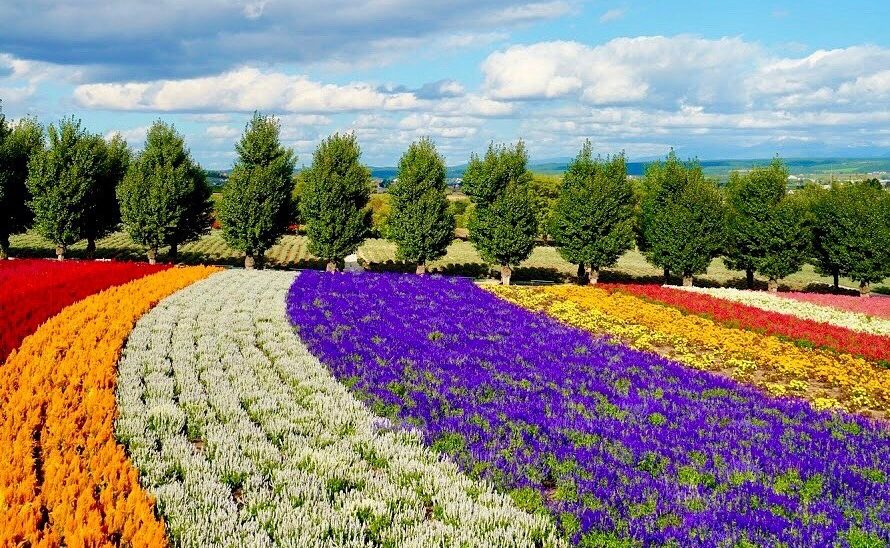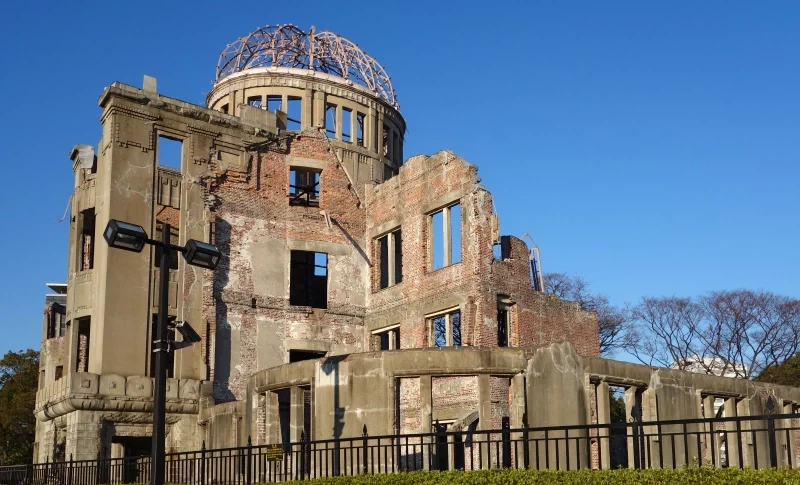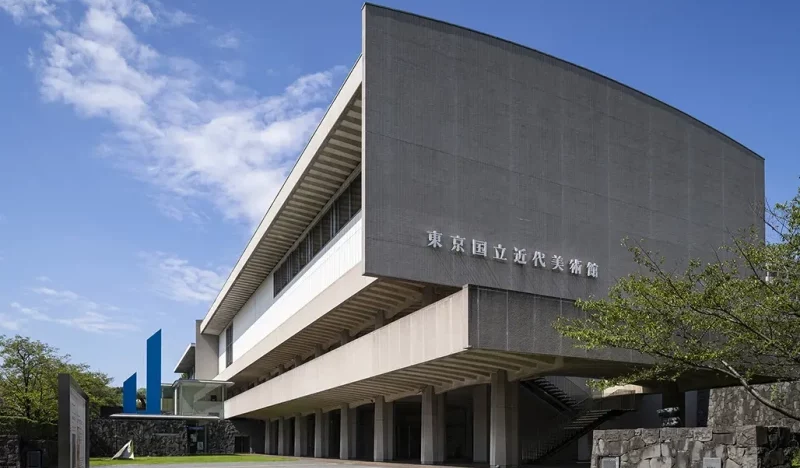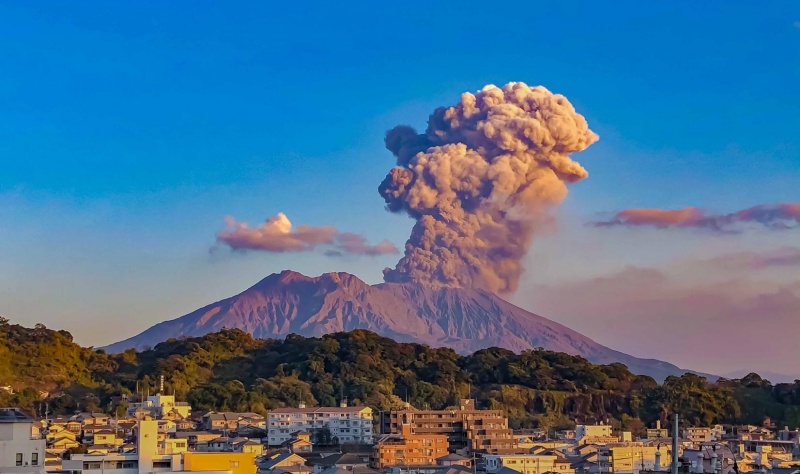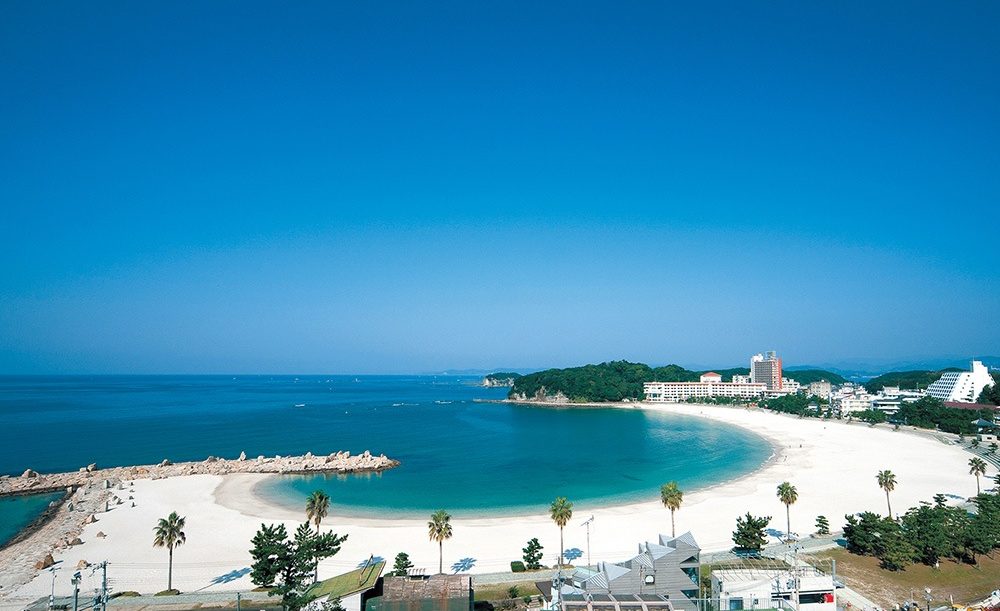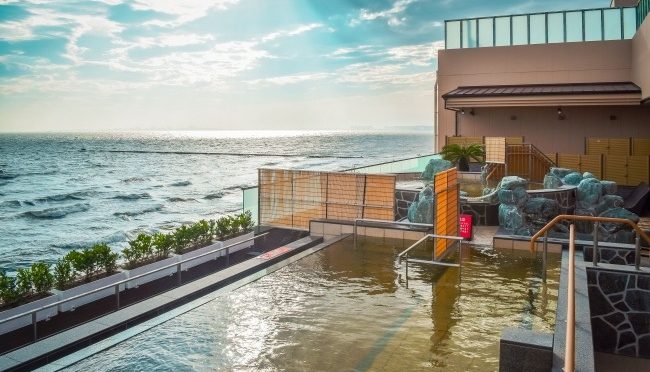Shiga Prefecture surrounding Japan's largest "Mother Lake" Biwa, is home to a wealth of sightseeing attractions. Here, you can find Hikone Castle, the residence of the Ii family, Azuchi Castle related to Oda Nobunaga, and numerous temples and shrines such as Hieizan Enryakuji and Ishiyama-dera. Recently, high-altitude resorts offering stunning views of Lake Biwa have been emerging. Whether during cherry blossom season or autumn foliage, the scenery is breathtaking.
With convenient access from Kyoto, Shiga Prefecture is introduced in detail by Japanrar, showcasing its charm with the top 20 must-visit and hidden attractions!
Popular Attraction [1] Biwako Terrace / Otsu City
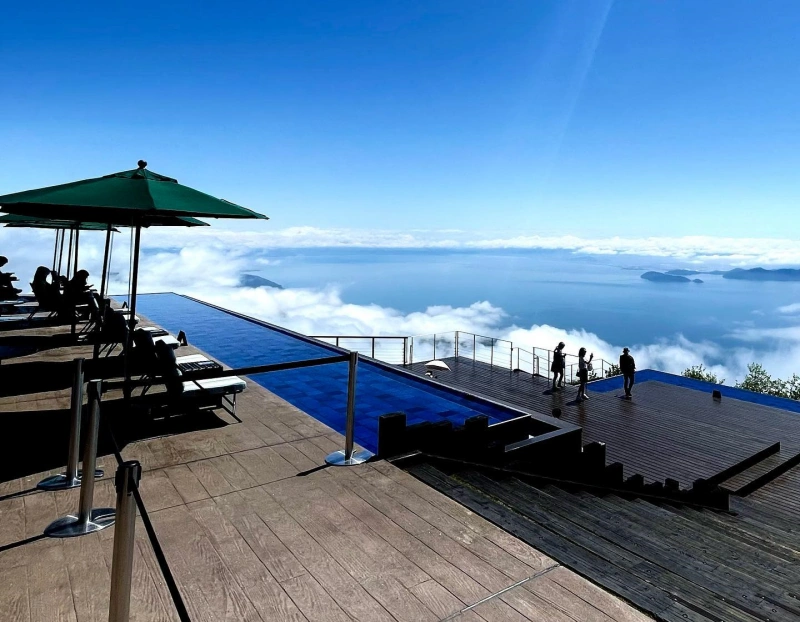
Located on the western shore of Lake Biwa, Biwako Valley Ski Resort transforms into the exotic “Biwako Terrace” during the green season, becoming a highland resort perfect for various outdoor activities.
Experience the thrilling zipline that feels like soaring over Lake Biwa! There’s also a stunning café offering panoramic views of Lake Biwa from north to south, a favorite among visitors.
Biwako Terrace (びわ湖テラス)
Address: 1547-1 Kido, Otsu City, Shiga Prefecture
Cable Car Hours:
April–October: 9:00–17:00, November: 9:30–16:30 *Typically operates from early April to early November
Access: Approx. 5 minutes by car from Shiga IC, or 10 minutes by bus from JR Shiga Station to “Biwako Valley Mae”
Popular Attraction [2] Mii-dera Temple / Otsu City
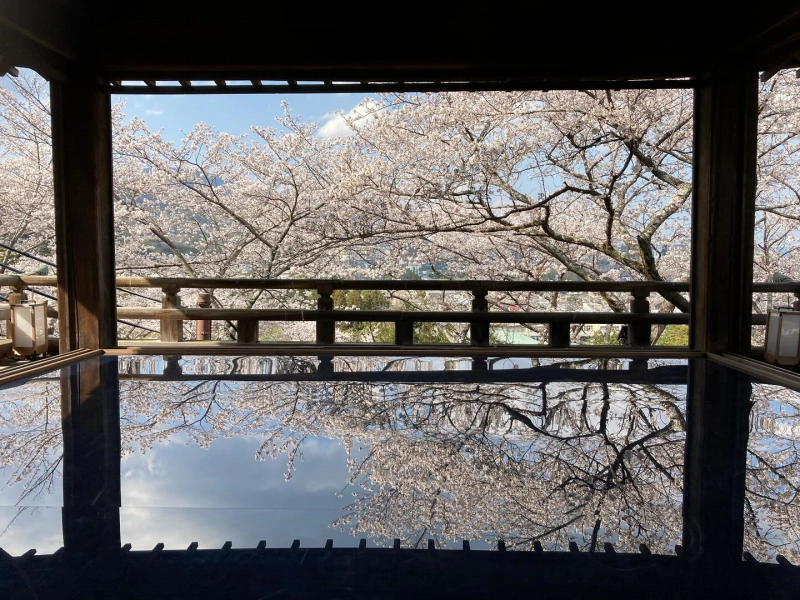
With over 1,100 years of history, Mii-dera, the head temple of the Tendaijimon sect, is one of Shiga’s most iconic ancient temples and part of the Saigoku 33 Kannon Pilgrimage.
Mii-dera houses numerous cultural treasures of exceptional quality, ranking among Japan’s finest. The Kondo Hall, designated a National Treasure with its cypress-bark roof, and the sacred spring “Akaiya” (said to have been used for the births of Emperors Tenji, Temmu, and Jito), remain popular attractions for visitors.
Mii-dera Temple (三井寺)
Address: 246 Onjojicho, Otsu City, Shiga Prefecture
Visiting Hours: 9:00–16:30 (entry closes at 16:00)
Access: Approx. 7-minute walk from Keihan Mii-dera Station
Popular Attraction [3] Hieizan Enryakuji / Otsu City
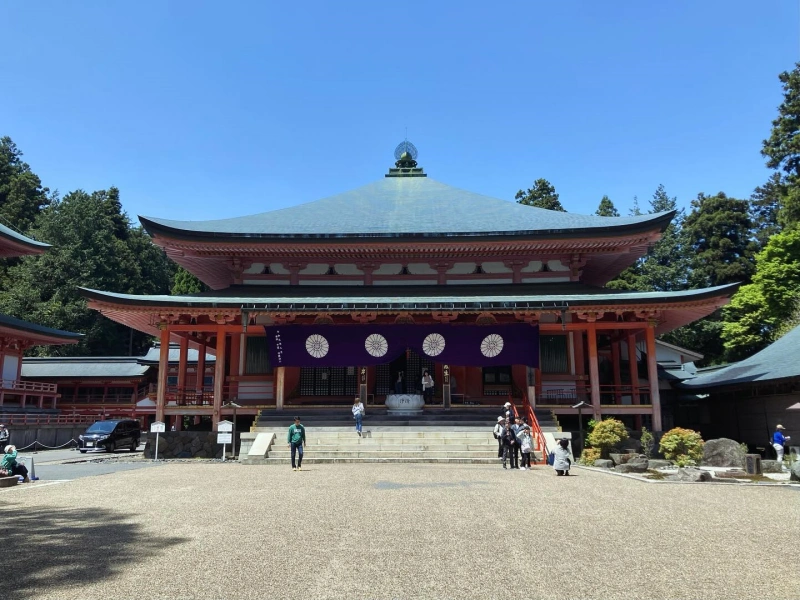
Walking through Hieizan Enryakuji, you’ll feel the solemn atmosphere of the Konpon Chudo and Toto area.
Founded by the monk Saicho, Hieizan Enryakuji was designated a UNESCO World Heritage Site in 1994. The entire Mount Hiei represents Enryakuji, with no single temple building; the attractions are divided into three areas: Toto, Saito, and Yokawa.
The Hoka Sojiin Toto, overlooking Lake Biwa, is a key structure in the Toto area, alongside Konpon Chudo. Rebuilt 400 years after Oda Nobunaga’s burning of Mount Hiei, its vibrant vermilion architecture stands out in the greenery, with murals and statues visible through glass windows.
Hieizan Enryakuji (比叡山延暦寺)
Address: 4220 Sakamotohonmachi, Otsu City, Shiga Prefecture
Pilgrimage Hours:
Toto Area, Mountain Base, Shiga-in, Shogenji: 9:00–16:00 year-round
Saito, Yokawa Areas: 9:00–16:00 (varies by season)
Access: Take the Eizan Cable Car and Ropeway to Hieizan Summit Station
Popular Attraction [4] Hikone Castle / Hikone City
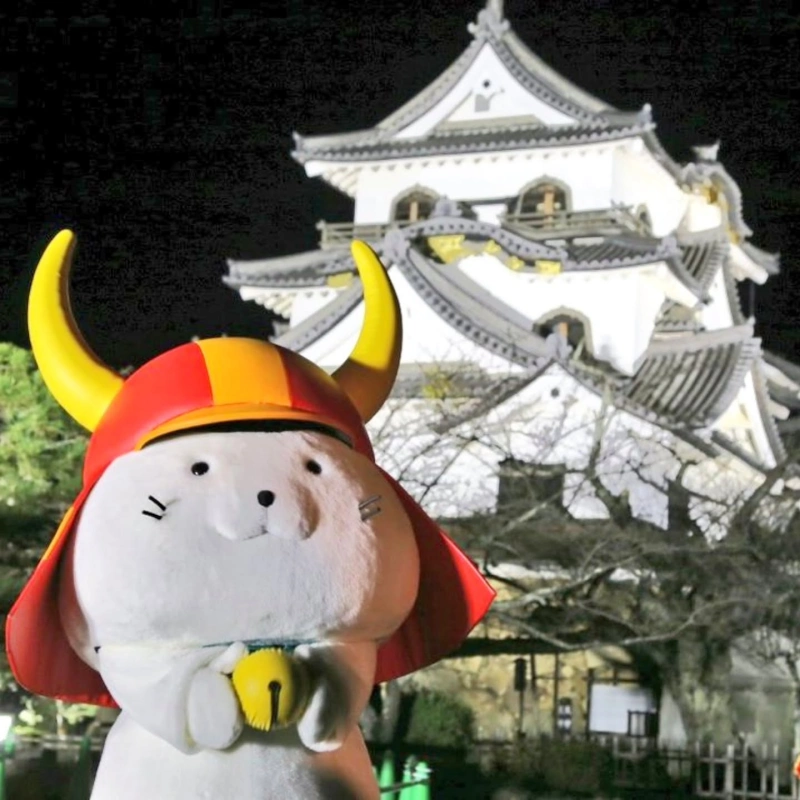
Situated on a hill overlooking Lake Biwa, “Hikone Castle” is Shiga Prefecture’s most iconic tourist attraction. The castle is located on Hikone Mountain, also known as Kinkizan, earning it the nickname Kinki Castle.
Especially during cherry blossom season, Hikone Castle’s beautiful cherry blossoms, historic architecture, and stone walls create a quintessential Japanese spring scene. The Genkyuen Garden, located northeast of the castle, is a vast Japanese garden and a must-visit highlight.
Hikone Castle (彦根城)
Address: 1-1 Kinkicho, Hikone City, Shiga Prefecture
Hours: 8:30–17:00
Access: Approx. 15-minute walk from JR Hikone Station
Popular Attraction [5] Kurobe Square / Nagahama City
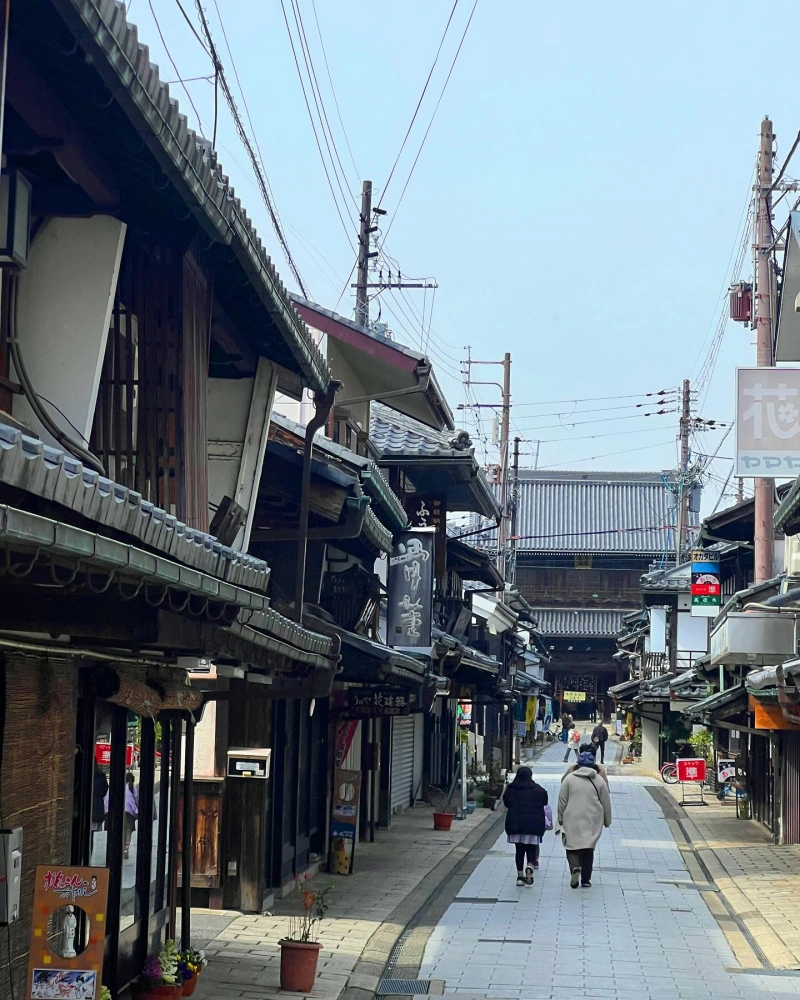
The glass-themed street “Kurobe Square” in Nagahama City, Shiga Prefecture, is both retro and stylish! It’s filled with various glass craft shops. The shops are numbered starting from No. 1, allowing visitors to enjoy strolling through a blend of retro and modern streetscapes.
The heart of Kurobe Square is the Kurobe Glass Museum (No. 1), displaying a charming array of glass items from jewelry to cups and tableware. The No. 13 building, “Glass Studio Ludique,” offers hands-on experiences like glassblowing.
Kurobe Square (黒壁スクエア)
Address: 12-38 Motohamacho, Nagahama City, Shiga Prefecture
Hours: Varies by shop
Access: Approx. 5-minute walk from JR Nagahama Station
Popular Attraction [6] Chikubu Island / Nagahama City
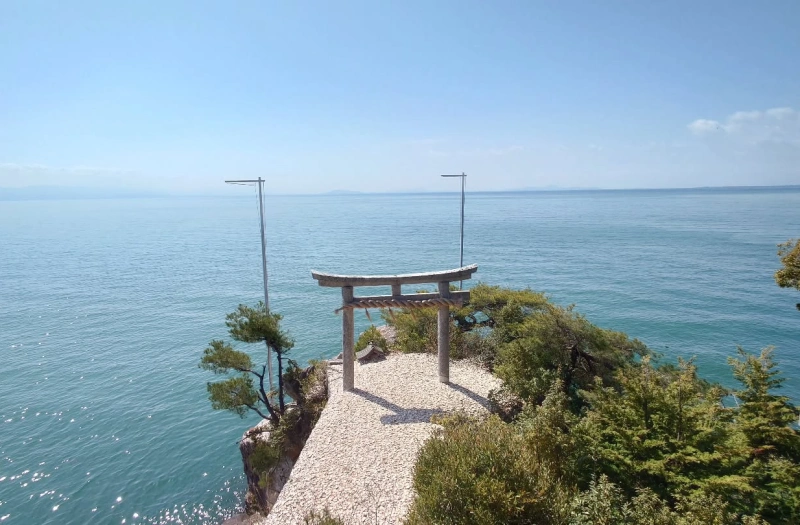
The spiritual “Chikubu Island” on Lake Biwa is a popular tourist spot and the location of Hogonji Temple, the 30th stop on the Saigoku 33 Kannon Pilgrimage, attracting many pilgrims.
The Biwako Steamship is the main transport for visitors and pilgrims to Chikubu Island, with cruise routes offering scenic lake views.
Chikubu Island (竹生島)
Address: 1664-1 Hayazakicho, Nagahama City, Shiga Prefecture
Access: Approx. 30–35 minute ferry ride from Imazu Port or Nagahama Port
Popular Attraction [7] MIHO MUSEUM / Koka City
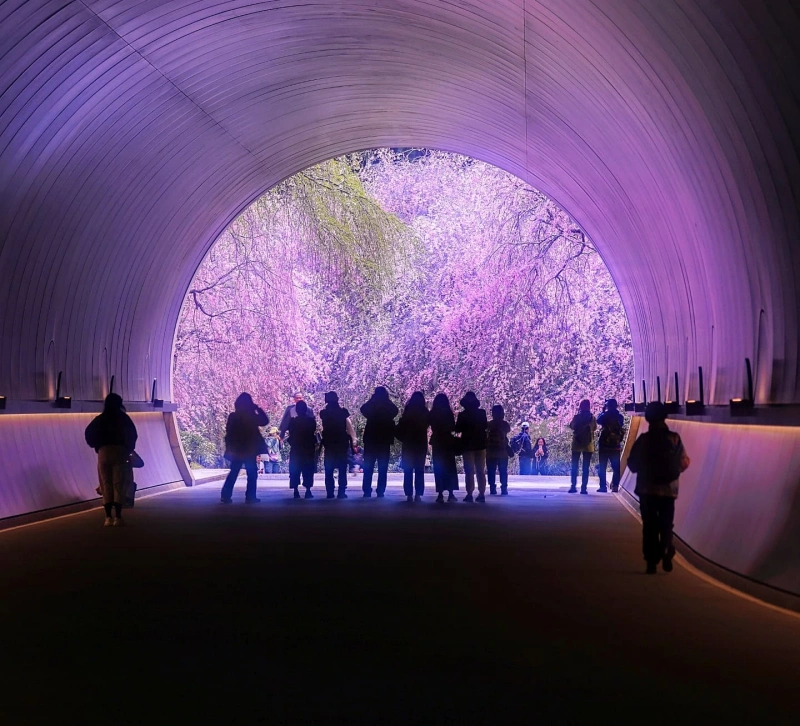
The “MIHO MUSEUM” in Shigaraki, Koka City, Shiga Prefecture, designed by architect I.M. Pei (known for the Louvre’s glass pyramid), features a unique aesthetic with its complex ceiling and exterior framework.
Springtime makes it a renowned cherry blossom spot in Shiga, with dreamy views from the tunnel. Surrounded by mountains, Shigaraki’s spring arrives later, making it one of the last places in the Kansai region to see cherry blossoms.
MIHO MUSEUM
Address: 300 Momodani, Tashiro, Shigaraki-cho, Koka City, Shiga Prefecture
Hours: 10:00–17:00
*Closed in winter and during exhibition changes
Access: Bus from JR Ishiyama Station to “MIHO MUSEUM”
Popular Attraction [8] Hachiman-bori / Omihachiman City
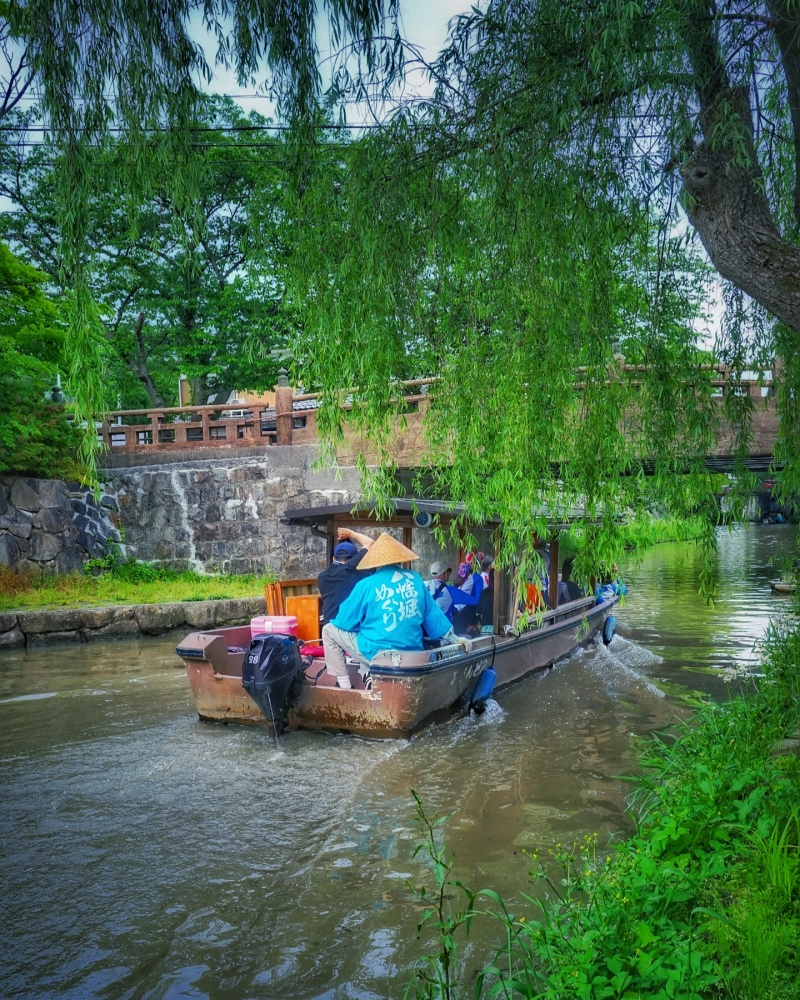
Omihachiman City, Shiga Prefecture, began in 1585 when Toyotomi Hidenaga (Toyotomi Hideyoshi’s nephew) built a castle on Hachiman Mountain. The city retains its orderly grid layout, with Shinmachi-dori, the birthplace of Omi merchants, designated as an Important Preservation District for Traditional Buildings.
The striking “Hachiman-bori” canal is a filming location for numerous dramas and movies. Visitors can take a boat tour to enjoy the scenic riverside views.
Hachiman-bori (八幡堀)
Address: Around Miyauchicho, Omihachiman City, Shiga Prefecture
Access: Approx. 5-minute walk from “Osugicho” bus stop, reachable by bus from JR Omihachiman Station
Popular Attraction [9] Metasequoia Tree-lined Path / Takashima City
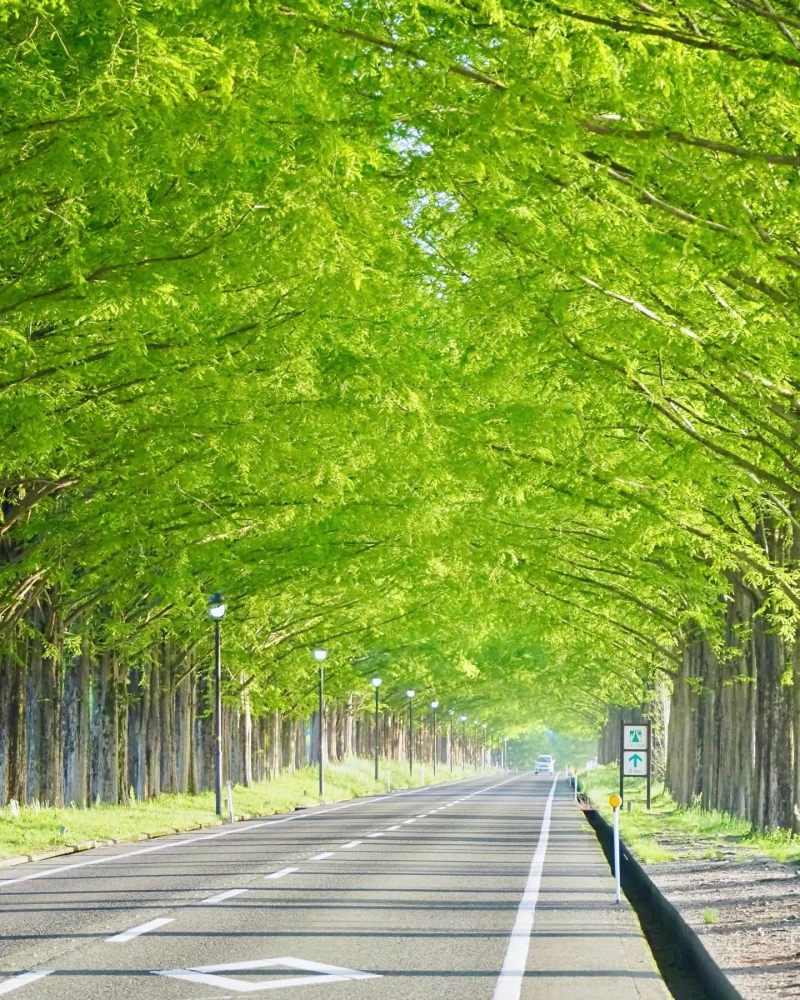
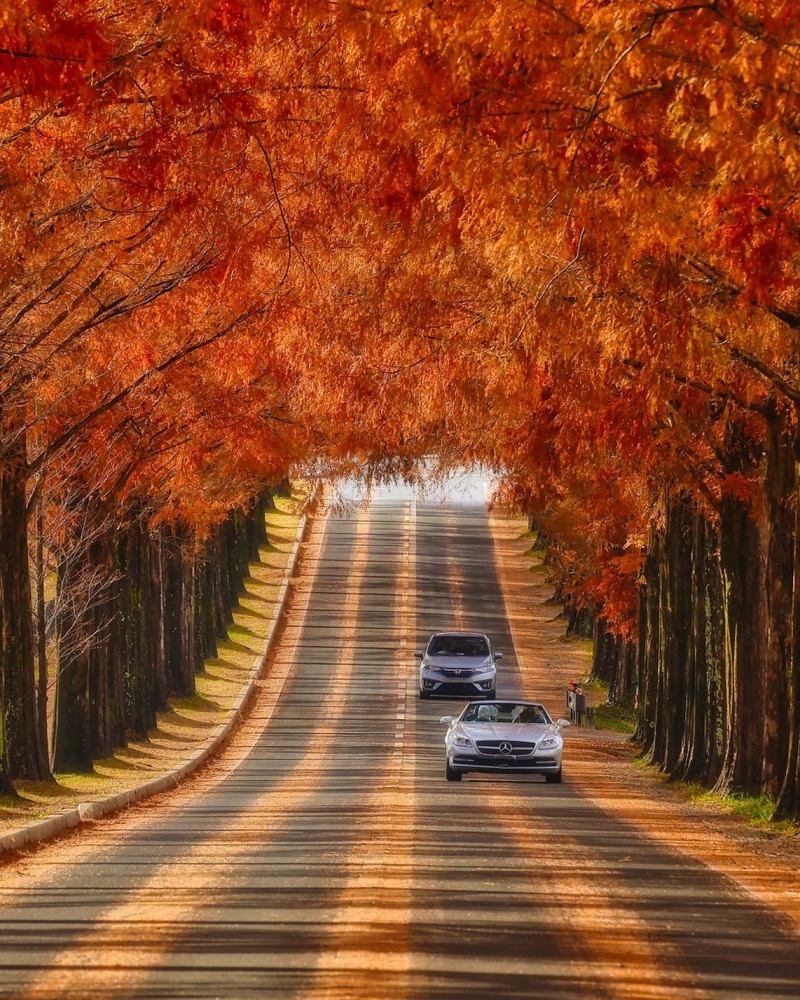
The iconic “Metasequoia Tree-lined Path” in Makinocho, Takashima City, stretches 2.5 km from Makino Pickland Chestnut Orchard to Makino Plateau. In 1994, it was selected by Yomiuri Shimbun as one of the “New 100 Best Tree-lined Roads in Japan.”
This tree-lined path gained fame through the Korean drama *Winter Sonata* and showcases captivating beauty in all four seasons.
Metasequoia Tree-lined Path (メタセコイア並木道)
Address: Hiruguchi to Makino, Makinocho, Takashima City, Shiga Prefecture
Access: Approx. 6-minute bus ride on the Makino Plateau Line from JR Makino Station to “Makino Pickland”
Popular Attraction [10] Biwako Hakodateyama / Takashima City
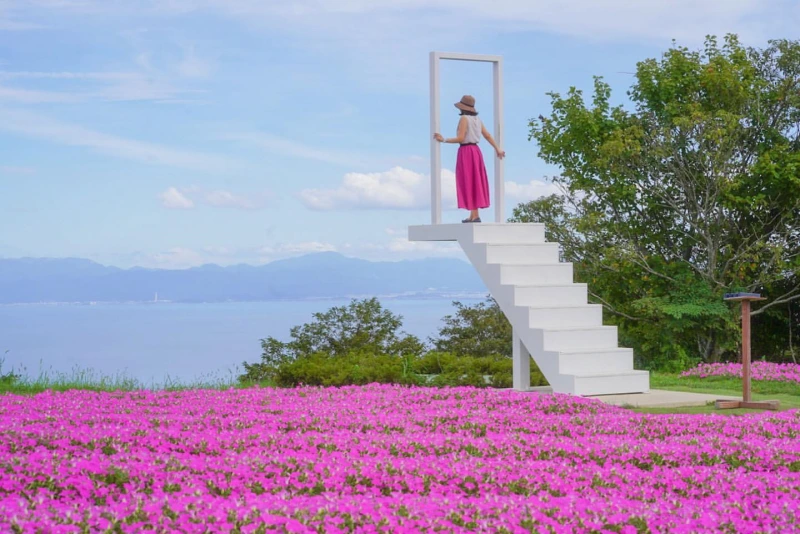
“Biwako Hakodateyama” in Takashima City is a fantastic spot for photography, featuring a beautiful café and decorative lighting. A ski resort in winter, it transforms into a flower park during the green season, offering playgrounds and ziplines popular with kids, making it an excellent family destination!
After descending the cable car, climb a hill blooming with lilies to reach an observation deck overlooking Lake Biwa. The cool breeze makes it a perfect summer date spot. Night cable car events are held on Saturdays from September to early November.
Biwako Hakodateyama (びわこ箱館山)
Address: Hiokimae, Imazu-cho, Takashima City, Shiga Prefecture
Hours: 9:30–17:00
Access: Bus from JR Omi-Imazu Station to “Hakodateyama”
Hidden Attraction [11] Ishiyama-dera / Otsu City
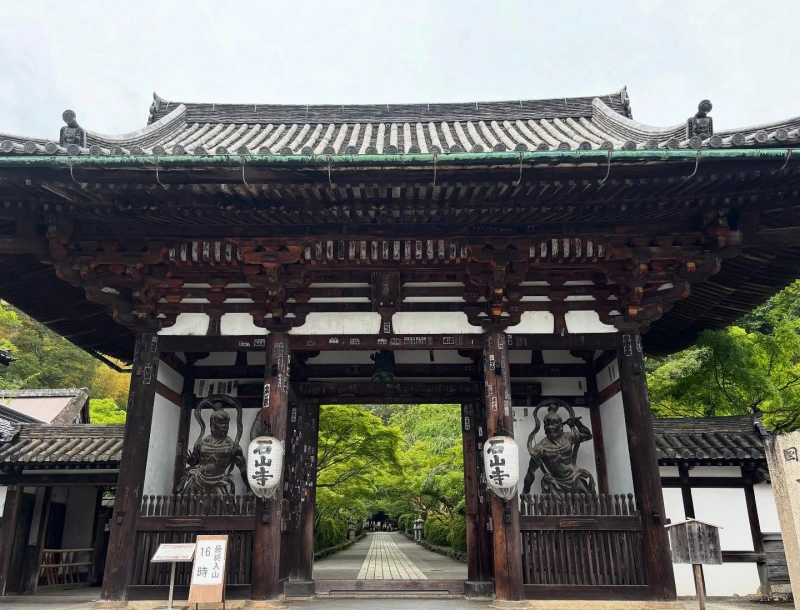
A significant Kannon pilgrimage site, “Ishiyama-dera” in Shiga Prefecture has over 1,300 years of history since the Heian period and remains a popular destination. Located along the Setagawa River, the temple is built on a natural monument rock formation and houses numerous National Treasures and Important Cultural Properties, including the Main Hall, East Gate, and Taho Tower.
The East Gate, built in the Irimoya style with a tiled roof, was donated by Minamoto no Yoritomo in 1190. During the Azuchi-Momoyama period, Toyotomi Hideyoshi’s consort Yodo-dono extensively renovated it to pray for the Toyotomi family’s prosperity and her son Hideyori’s safety. The Main Hall’s Ai-no-Ma includes the Genji-no-Ma, linked to Murasaki Shikibu.
Ishiyama-dera (石山寺)
Address: 1-1-1 Ishiyamadera, Otsu City, Shiga Prefecture
Visiting Hours: 8:00–16:30
Access: Approx. 10-minute walk from Keihan Ishiyama-dera Station
Hidden Attraction [12] Omi Jingu / Otsu City
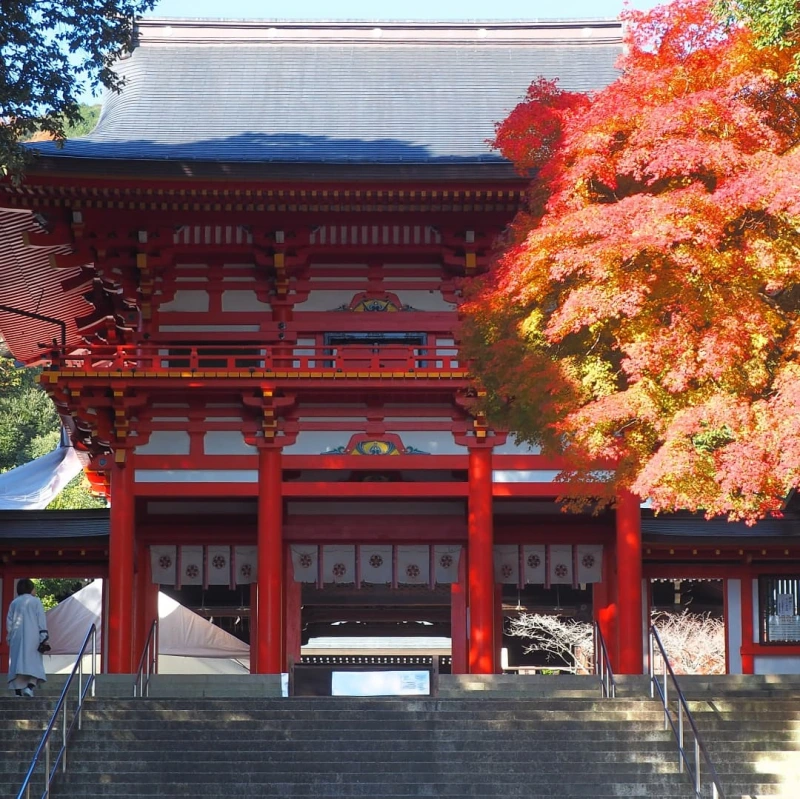
“Omi Jingu” enshrines Emperor Tenji, the 38th emperor who moved the capital from Asuka to this area. His poem, “Aki no ta no kariho no io no toma o arami waga koromode wa tsuyu ni nuretsutsu,” was chosen as the opening piece of the Ogura Hyakunin Isshu, making Omi Jingu known as the “Hall of Karuta” and a venue for competitive karuta events.
The manga *Chihayafuru*, themed around competitive karuta, was adapted into anime and films, often featuring the shrine’s gate viewed from the stone steps in its posters.
Omi Jingu (近江神宮)
Address: 1-1 Jingucho, Otsu City, Shiga Prefecture
Hours: 6:00–18:00
Access: Approx. 9-minute walk from JR Omi-Jingu-mae Station
Hidden Attraction [13] Ogoto Onsen / Otsu City
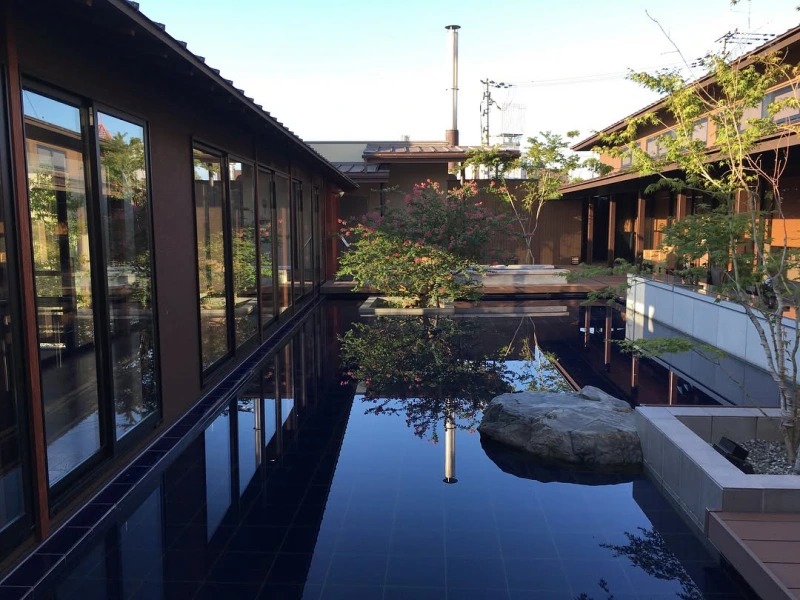
“Ogoto Onsen,” southwest of Lake Biwa, is a 1,200-year-old hot spring street in Shiga Prefecture, offering open-air baths with lake views, said to have been founded by the monk Saicho. Legend has it that during the Heian period, nobleman Imaosukune had a villa here, and the area was named “Ogoto” after the koto music heard from his residence.
The hot spring is a highly alkaline simple spring with a pH of 9.0, known as a “beauty bath” for its skin-smoothing effects.
Ogoto Onsen (おごと温泉)
Address: Ogoto, Otsu City, Shiga Prefecture
Access: JR Ogoto Onsen Station
Hidden Attraction [14] Ukimido (Mangetsu-ji Temple) / Otsu City
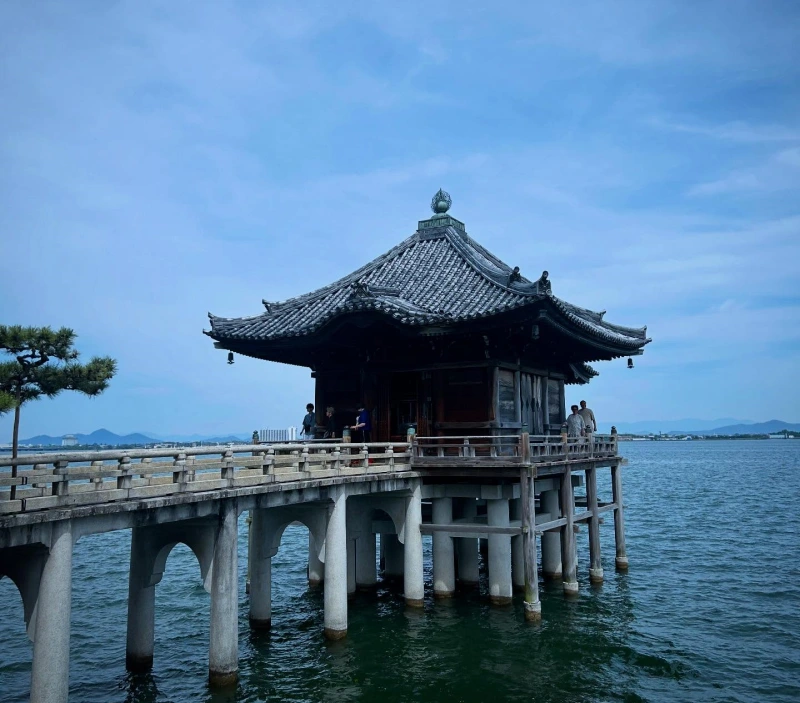
At the narrowest point of Lake Biwa lies the popular “Mangetsu-ji Temple,” with its “Ukimido” hall appearing to float on the lake, built in the late Heian period. It is said to have been constructed by the monk Genshin (Eshin Sozu) to pray for safety on the lake and the salvation of all beings.
In the Muromachi period, “Ukimido” was selected as one of the Omi Eight Views as “Katata Rakugan,” offering stunning scenery in all seasons and times of day, captivating cultural figures like Matsuo Basho, Utagawa Hiroshige, and Katsushika Hokusai.
Ukimido (Mangetsu-ji Temple) / 浮御堂(満月寺)
Address: 1-16-18 Honkatata, Otsu City, Shiga Prefecture
Visiting Hours: 8:00–17:00 (varies by season)
Access: Approx. 5-minute walk from “Katata Demachi” bus stop, reachable by bus from JR Katata Station
Hidden Attraction [15] Shiga Prefecture Ceramic Forest / Koka City
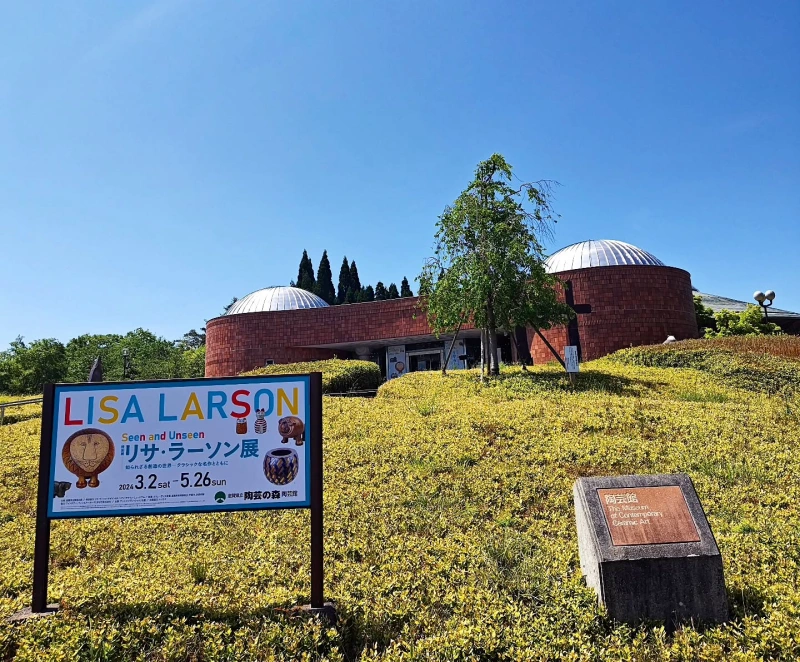
Famous for its tanuki figurines, Shigaraki ware has a long history as one of Japan’s six ancient kilns. The “Shiga Prefecture Ceramic Forest” in Shigaraki, Koka City, is a facility to experience the diverse charm of Shigaraki ware.
The Ceramic Museum, the core facility, holds regular special exhibitions. The unique Shigaraki ware artworks scattered outside are also worth seeing.
Shiga Prefecture Ceramic Forest (滋賀県立陶芸の森)
Address: 2188-7 Chokushicho, Shigaraki, Koka City, Shiga Prefecture
Hours: 9:30–17:00
Access: Approx. 5-minute walk from Koka City Community Bus stop “Togeinosen Mae” or “Togeinosen (Togeikan Mae)”
Hidden Attraction [16] Koka Ninja Village / Koka City
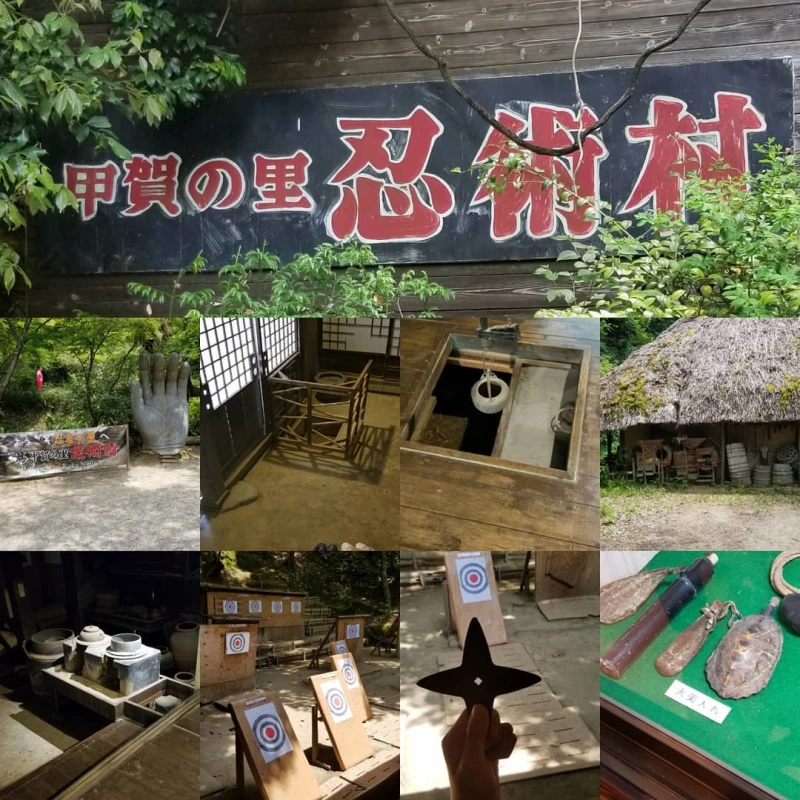
The Koka ninja style, alongside the neighboring Iga style, is one of the most famous ninja traditions, representing the ninja techniques of the Koka region in Omi Province.
“Koka Ninja Village” in Koka City is a ninja-themed park. The trick house features revolving doors, trapdoors, and hidden stairs. The Ninja Museum displays unique ninja ladders, and ninja costume rentals allow the whole family to enjoy ninja fun.
Koka Ninja Village (甲賀の里 忍術村)
Address: 394 Oki, Koka-cho, Koka City, Shiga Prefecture
Hours: 10:00–17:00
Access: Approx. 10-minute free shuttle bus from JR Koka Station
Hidden Attraction [17] Azuchi Castle Ruins / Omihachiman City
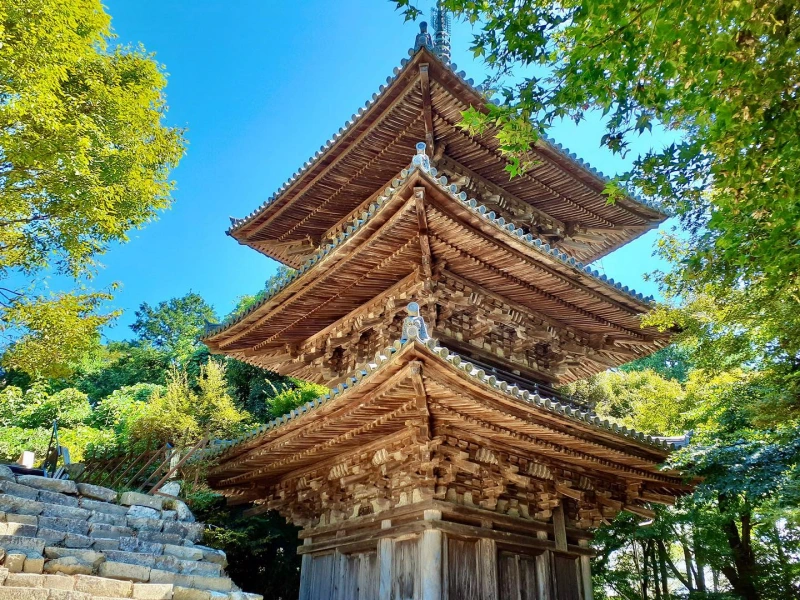
During the Sengoku period, Oda Nobunaga, on the verge of unifying Japan, built the magnificent “Azuchi Castle” along Lake Biwa in Shiga Prefecture, praised by European missionaries at the time. However, the grand castle was burned down just three years after completion due to Nobunaga’s death.
Though most of Azuchi Castle’s structures are gone, the remaining stone walls and the keep’s foundation stones are worth seeing. The Niomon Gate and three-story tower of Sokenji Temple, built by Nobunaga within the castle, remain intact.
Azuchi Castle Ruins (安土城跡)
Address: Shimotoyoura, Azuchi-cho, Omihachiman City, Shiga Prefecture
Visiting Hours: 8:30–17:00 (varies by season)
Access: Approx. 25-minute walk from JR Azuchi Station
Hidden Attraction [18] Shirahige Shrine / Takashima City
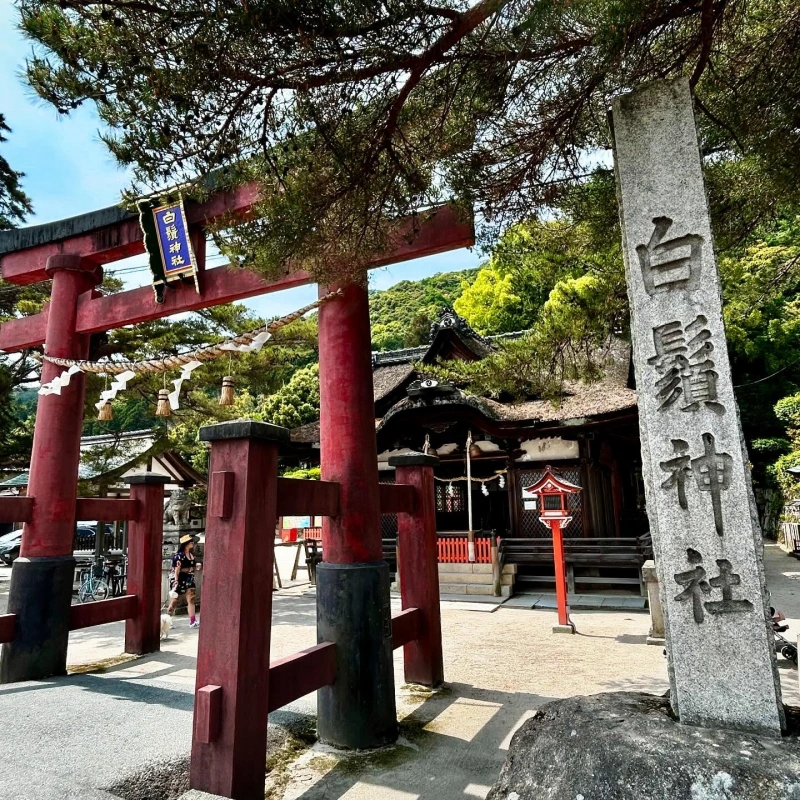
In northwestern Takashima City, “Shirahige Shrine,” established about 1,900 years ago during Emperor Suinin’s reign, faces Lake Biwa and is considered the oldest shrine in Omi and the head shrine of Shirahige shrines nationwide.
The vermilion torii gate on the lake attracts many visitors, offering picturesque views with Okinoshima Island in the background. Recently, it has gained attention as a spiritual site. Nearby Shirahige Beach, with its pine grove and white sand, is also a popular spot.
Shirahige Shrine (白髭神社)
Address: 215 Ukawa, Takashima City, Shiga Prefecture
Access: Approx. 5-minute taxi ride from JR Omi-Takashima Station
Hidden Attraction [19] Kaizu Osaki / Takashima City
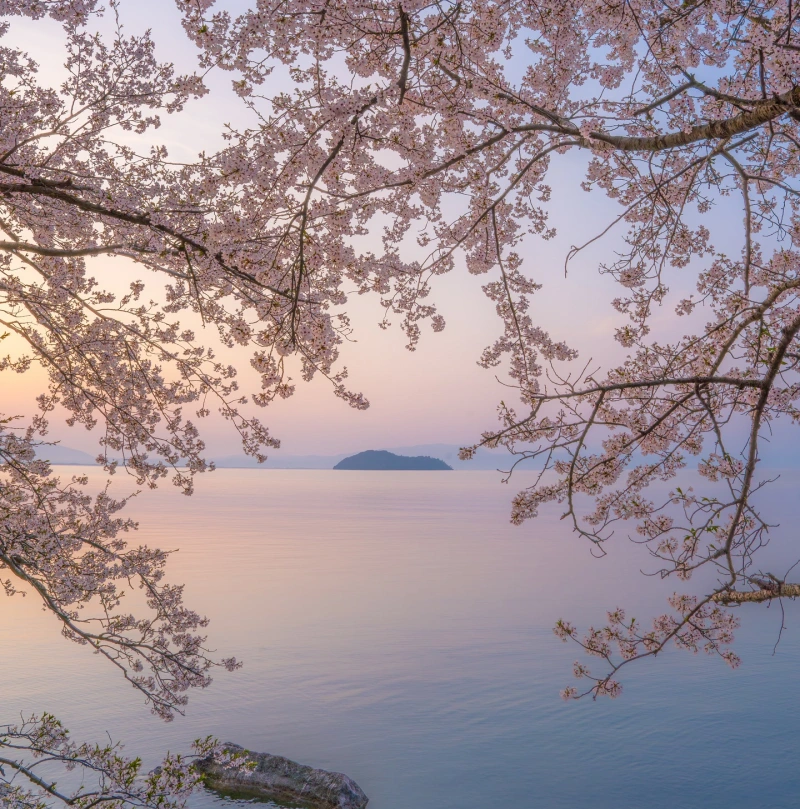
The cherry blossom haven “Kaizu Osaki” in northern Lake Biwa features about 800 Yoshino cherry trees stretching 4 km along the cape, forming a stunning cherry blossom tunnel! Blooming about a week later than Kyoto City, it attracts locals and visitors chasing the last cherry blossoms, creating a lively atmosphere.
“Kaizu Osaki” is famous as one of the Biwako Eight Views, “Morning Mist: Kaizu Osaki’s Reefs,” with frequent morning fog offering a mystical view of Lake Biwa and cherry blossoms.
Kaizu Osaki (海津大崎)
Address: Kaizu, Makinocho, Takashima City, Shiga Prefecture
Access: Approx. 4-minute walk from “Kaizu Osaki Guchi” town bus stop
Hidden Attraction [20] Hyakusaiji Temple / Higashiomi City
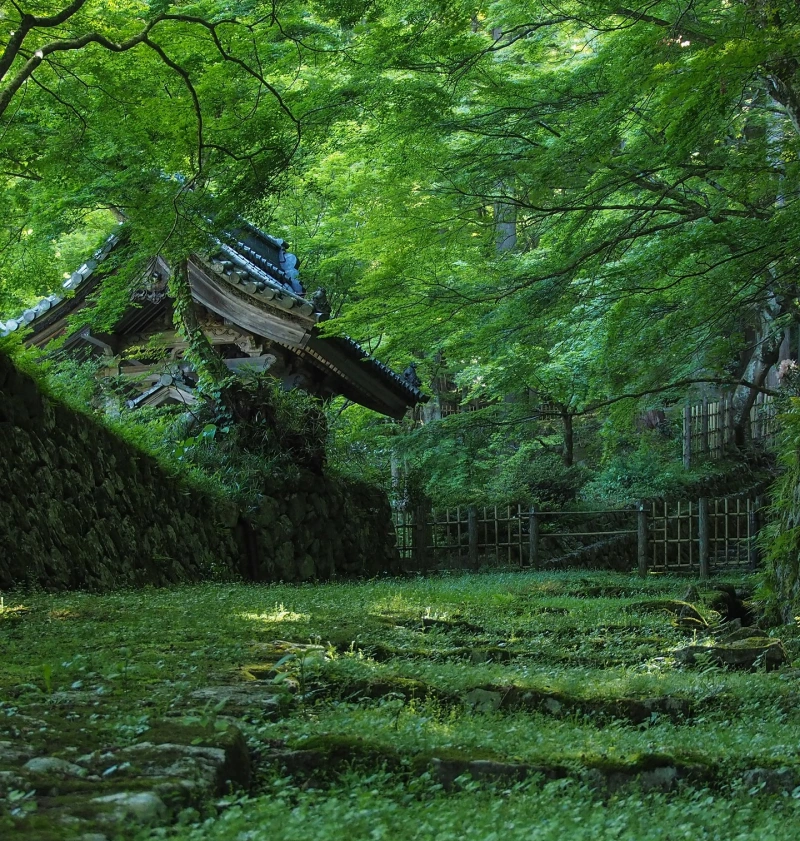
On the eastern side of Lake Biwa, Saimyoji, Kongorinji, and Hyakusaiji, collectively known as the “Koto Three Mountains,” are Tendai sect temples with over 1,000 years of history.
“Shakayama Hyakusaiji,” the southernmost of the Koto Three Mountains in Higashiomi City, is one of Omi’s oldest temples. Its strolling pond garden, “Teien Honbo,” is called a “world-renowned garden” and is listed among Japan’s 100 best gardens. Utilizing the eastern hillside with massive rocks, it exudes grandeur, offering views of Lake Biwa and Mount Hiei from the observation deck at Kiken-in Honbo.
Hyakusaiji Temple (百済寺)
Address: 323 Hyakusaijicho, Higashiomi City, Shiga Prefecture
Visiting Hours: 8:30–17:00 (subject to change)
Access: Approx. 10-minute taxi ride from Omi Railway Yokaichi Station
